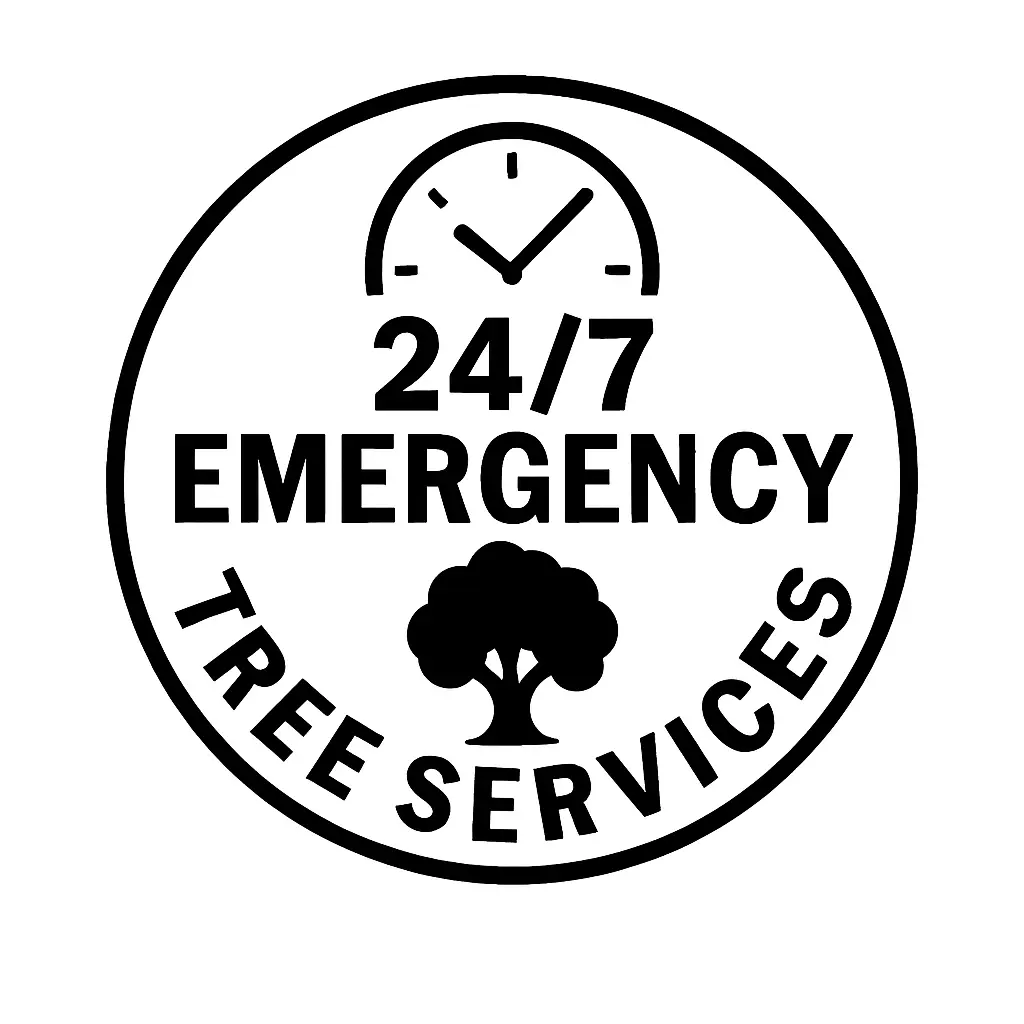Understanding how to save a dying tree from lack of water is crucial for maintaining the health and longevity of your trees. This knowledge can be the difference between vibrant, thriving greenery and an arid landscape.
Trees, like all living organisms, require adequate hydration to survive and flourish. Lack of sufficient water can lead to wilting leaves, brittle branches, or even death.
This guide will provide you with effective watering techniques that cater specifically to both young and mature trees. Not only is the amount of water important, but also its quality and timing. We have more information on dying trees from other causes here.
We’ll also delve into additional methods on how to boost tree health beyond just watering. Remember: learning how to save a dying tree from lack of water is only part of the equation – comprehensive care involves much more!

Identifying Signs of a Dying Tree
At Owens Brothers Tree Service, our goal is to ensure that your trees are healthy and thriving. However, there may be instances when you notice signs indicating that your tree’s health is deteriorating due to lack of water.
The most common sign we come across in such cases includes leaf discoloration or wilting leaves. If the foliage on your tree starts turning yellow or brown prematurely, it might indicate dehydration. Another symptom can be abnormally small leaves – an indication that the tree lacks sufficient water.
Apart from these symptoms related to leaves, partially-dead branches also suggest issues with hydration levels within the tree’s life cycle. These branches tend to lose their flexibility and become brittle over time because they haven’t received enough moisture.
Bark Conditions Indicating Lack Of Water
In addition to observing changes in leaf condition and dead branches, examining bark conditions could provide vital clues about its overall health status too. Contact us today.
If you see peeling or cracked bark on your living tree, this often suggests drought conditions affecting them adversely.
Fall Coloration And Other Symptoms
Last but not least, fall coloration appearing outside the autumn season often signifies stress from lack of water, which disrupts the normal photosynthesis process, hampering the entire root system over time, making recovery difficult without professional help. Contact us now!
Dry soil around the base indicates insufficient watering, leading towards death if not addressed promptly by following specific watering instructions recommended for each type of tree. Mature ones require less compared to young saplings needing more frequent sessions during summer months, especially in areas experiencing high temperatures causing rainfall scarcity.
The Different Watering Needs Between Young and Mature Trees
It’s essential to understand the watering requirements of your trees for their survival. Newly planted or young trees require a considerable amount of water, as much as 20 gallons per week during the initial years.
This is because these younger specimens are still in the process of establishing their root systems, requiring sufficient moisture to stimulate growth. On the other hand, mature trees have already developed extensive root networks, enabling them to access deeper soil hydration sources.
Effective Watering Methods for Trees
Differentiating between effective watering techniques suitable for each tree’s life stage can be pivotal in maintaining healthy foliage. For newly planted or youthful saplings with shallow roots, frequent light irrigation may prove more beneficial than sporadic deep soaking sessions.
Mature arboreal species typically thrive when slow drip methods are employed. This technique ensures water reaches the entire root system, fostering healthier development even under drought conditions.
Besides differences in frequency and methodology applied while irrigating young versus mature plants, it’s equally vital to note seasonal variations impacting hydration needs. In hotter months marked by elevated evaporation rates, one must adapt accordingly by increasing garden oasis watering schedules, thus ensuring continuous lush greenery despite harsh weather patterns prevalent across certain geographic locations.
Boosting Tree Health with Techniques Beyond Watering
The vitality of your trees extends beyond mere watering. Other strategies can be implemented to boost tree health, especially when the water hasn’t effectively reached the tree’s roots or if there is a slow improvement in the tree’s condition.
Incorporating Organic Mulch and Eco-friendly Fertilizer
A technique that often proves beneficial involves incorporating organic mulch around your trees. This method not only aids moisture retention but also enriches soil fertility as it decomposes over time.
An adequate layer of mulch, ideally 2-4 inches thick, should encircle the base of each living tree without touching its trunk to prevent rotting and pest infiltration.
Beyond this, introducing an eco-friendly fertilizer can replenish necessary nutrients potentially deficient in your soil. However, ensure you select a product compatible with both your specific type of dying or dead tree and local conditions for optimal results.
Maintaining Soil pH Levels
Alongside fertilizing efforts, preserving appropriate soil pH levels is vital for maximum nutrient absorption by any mature or young root system under drought conditions. Most healthy trees prefer slightly acidic soils (with a pH between 6-7), though some species may require different standards. Testing and adjusting soil pH levels accordingly could significantly improve overall plant health.
Avoid drastic changes in pH; instead aim for gradual adjustments using materials like lime (to raise) or sulfur (lower).
Pest Control Measures
Dying trees are typically more vulnerable to pests, which further weaken them, causing abnormally small leaves, partially-dead branches, etc. Regular inspections on these matured ones looking out signs such as discolored foliage, unusual bark patterns will help detect issues early before they cause significant damage.
Regular Health Checkups for Your Trees
Trees, like us humans, require regular health check-ups. Monitoring your living tree can help detect early signs of diseases or pests before they become severe and threaten the tree’s life. This proactive approach also prevents potential threats from spreading to other healthy trees in proximity.
Besides visual inspections, conducting soil tests provides valuable insight into the nutrient content and pH level around your tree root system factors that greatly influence a tree’s overall health and growth.
Contacting Owens Brothers Tree Service
If abnormal signs appear during these routine checks, it is advisable to contact professional tree services like us. Our experts come armed with specialized knowledge and tools that enable us to accurately diagnose various ailments affecting trees.
Our services often encompass tree trimming, an essential procedure that maintains a healthy growth pattern by removing dead branches sapping energy away from new growing areas on the plant.
In addition, our recommendations may include specific watering techniques or products such as mulch or fertilizer based on each individual case assessment. Our expertise ensures every effort goes towards restoring dying trees while preventing future problems from arising.
The Risks Associated with Neglecting a Dying Tree
A dying tree, particularly one suffering from lack of water or other health issues, poses several risks if left unattended. The most notable is the susceptibility to diseases such as Dutch Elm disease, which can rapidly spread and affect healthy trees in close proximity.
Furthermore, pests find weak and unhealthy trees an attractive habitat. Once they establish themselves within your sickly tree’s structure, these unwelcome guests may decide to venture out and attack nearby living trees.
Potential Damage to Property
In addition to posing threats on a biological level, neglected dead branches pose physical dangers too. They could unexpectedly break off, leading not only to property damage but also potential personal injury scenarios during severe weather conditions like storms or high winds.
If decay has significantly progressed inside the trunk of a dead tree due to its root system failing because it hasn’t reached enough water supply, for instance, even mild wind gusts might cause this unstable giant to collapse, causing substantial damage around it.
Negative Environmental Impact
Trees are critical contributors to maintaining our ecosystem balance by providing oxygen production among many other benefits. Therefore, neglecting dying or dead trees without taking necessary preservation steps contributes negatively towards biodiversity loss along with climate change impacts locally.
Hiring Certified Arborists for Expert Tree Care
When your trees are under the strain of drought conditions, arborists bring a wealth of knowledge and experience to revive them.
Their expertise extends beyond mere hydration; they can evaluate the overall health of your tree, identifying signs of stress early enough before irreversible damage occurs.
Selecting an Experienced Arborist For Your Trees’ Needs
Choosing an arborist is a serious undertaking. You need someone who has extensive hands-on experience with reviving dying or stressed trees due to insufficient water supply.
Check their credentials thoroughly and ensure they hold appropriate certification from recognized bodies in this field. Ask about past experiences dealing with similar issues as yours within your region – it’s important that strategies implemented are tailored specifically for situations such as yours.
An Arborist’s Role in Revitalizing Dying Trees
Certified arborists play pivotal roles when it comes down to breathing life back into dehydrated trees on the brink of death. Their understanding allows them to spot tell-tale signs at early stages before severe harm sets in.

FAQs in Relation to How to Save a Dying Tree From Lack of Water
Can a tree recover from lack of water?
Absolutely, trees can bounce back from dehydration if promptly and properly rehydrated. However, severe or prolonged drought may cause irreversible damage.
Can you save a dehydrated tree?
Yes, with proper watering techniques and care measures like mulching and fertilizing, it’s possible to revive a dehydrated tree.
How do you bring a dry tree back to life?
You can resurrect a dry tree by implementing regular deep watering methods, applying organic mulch around the base for moisture retention, and using eco-friendly fertilizer.
How long does it take to rehydrate a tree?
The time needed for rehydration varies based on the species of the tree and severity of dehydration but generally takes several weeks to months.
How to Save a Dying Tree
Understanding the signs of a dying tree is your first step to recovery.
Young and mature trees have different watering needs, so adjust accordingly.
Beyond water, boosting health with organic mulch and environmentally-friendly fertilizer can work wonders.
Disease prevention is key as well; healthy trees are less susceptible to pests and diseases.
Regular checkups help catch issues early on before they become severe problems.
If things seem out of hand, don’t hesitate to call in professional tree workers for expert care.
Neglecting a dying tree comes with risks – including potential harm to surrounding flora.
Arborists know their stuff when it comes to saving a parched plant from further damage.
So there you have it: how to save a dying tree from lack of water isn’t just about hydration but involves an all-around approach towards better arboreal health.





